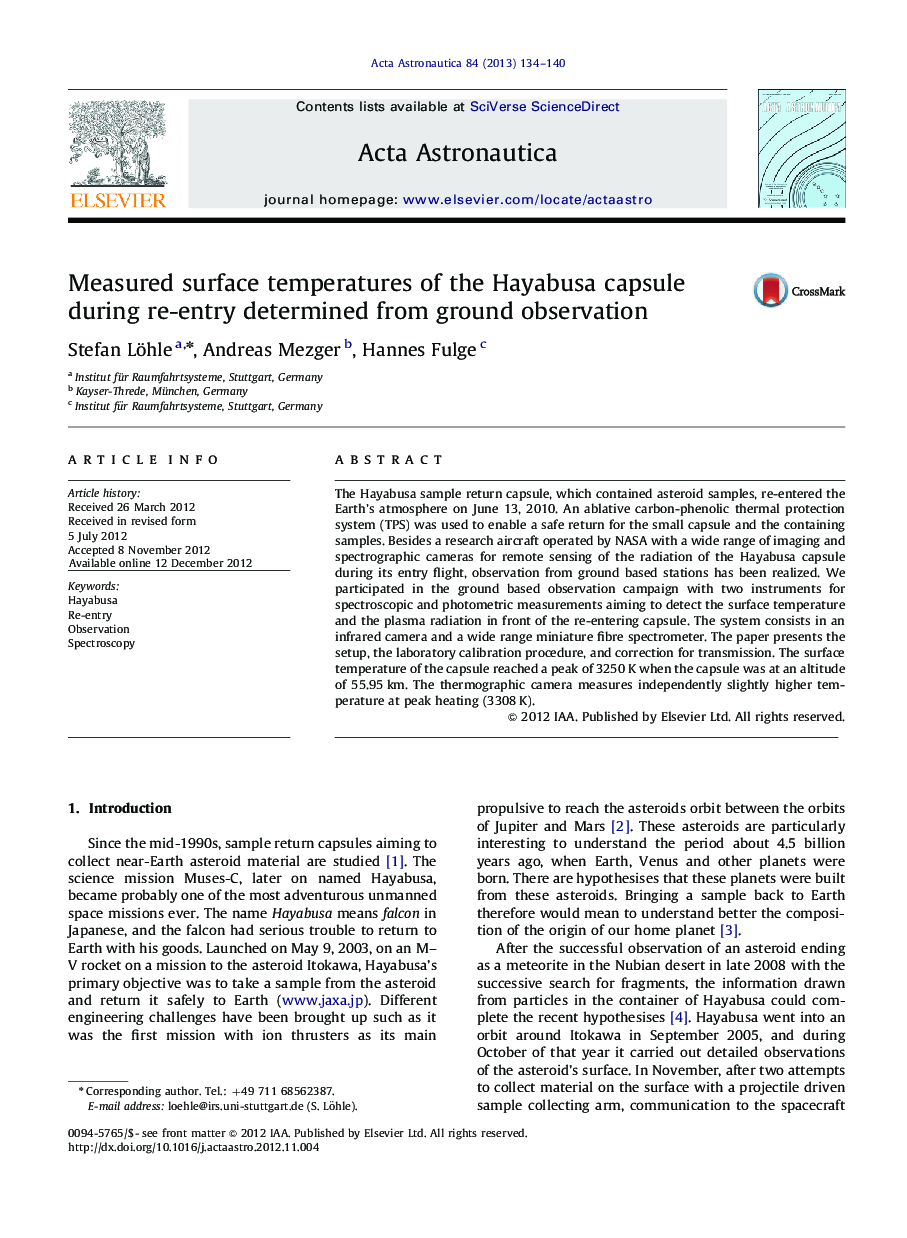| Article ID | Journal | Published Year | Pages | File Type |
|---|---|---|---|---|
| 1715123 | Acta Astronautica | 2013 | 7 Pages |
The Hayabusa sample return capsule, which contained asteroid samples, re-entered the Earth's atmosphere on June 13, 2010. An ablative carbon-phenolic thermal protection system (TPS) was used to enable a safe return for the small capsule and the containing samples. Besides a research aircraft operated by NASA with a wide range of imaging and spectrographic cameras for remote sensing of the radiation of the Hayabusa capsule during its entry flight, observation from ground based stations has been realized. We participated in the ground based observation campaign with two instruments for spectroscopic and photometric measurements aiming to detect the surface temperature and the plasma radiation in front of the re-entering capsule. The system consists in an infrared camera and a wide range miniature fibre spectrometer. The paper presents the setup, the laboratory calibration procedure, and correction for transmission. The surface temperature of the capsule reached a peak of 3250 K when the capsule was at an altitude of 55.95 km. The thermographic camera measures independently slightly higher temperature at peak heating (3308 K).
► An experimental setup of the Hayabusa observation campaign is presented. ► Surface temperatures have been derived from the ground based. ► The temperatures are important to judge the performance of the heat shield. ► Due to independent data recording, the matching temperatures are a highlight. ► It is shown how radiation heat flux affect the heat shield temperatures.
